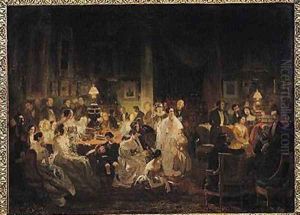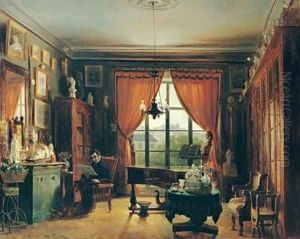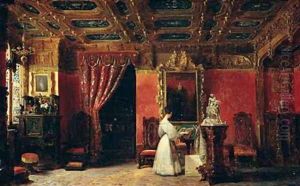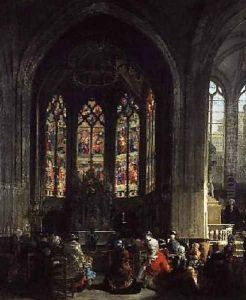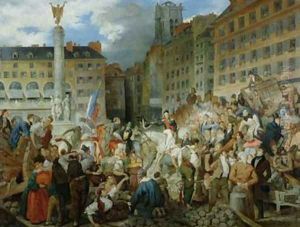Prosper Lafaye or Lafait Paintings
Prosper Lafaye, also known as Prosper Lafait, was a French painter, decorative artist, and fresco artist who was born on December 10, 1806, in Paris, France. He was recognized for his work during the 19th century, particularly for his contributions to the decoration of various public buildings in Paris and other parts of France.
Lafaye studied under the tutelage of François-Édouard Picot, a neoclassical painter, and later with Eugène Delacroix, who was a leading figure of the French Romantic school. This artistic education allowed Lafaye to develop a style that combined neoclassical precision with Romantic sensibility. His skills were not limited to canvas painting; he excelled in the creation of large-scale frescoes, which were popular during the period for decorating the interior walls of buildings.
Throughout his career, Prosper Lafaye undertook several notable commissions. Among his works are the decorations for the Council of State at the Palais d'Orsay, the ceiling of the Salle des États at the Louvre, and the frescoes in the Sainte-Clotilde Basilica in Paris. He also worked on the restoration of frescoes in the famous Château de Versailles.
Lafaye's style often included the use of allegorical figures and historical themes, which were in line with the tastes and expectations of the period. His work is characterized by careful composition, a vibrant palette, and a skillful rendering of both the human figure and architectural elements.
Despite his substantial contributions to the decorative arts, Prosper Lafaye is not as well-remembered today as some of his contemporaries. Nevertheless, his works can still be seen and appreciated in the public spaces for which they were created, serving as a testament to the artistic movements and cultural heritage of his time.
Prosper Lafaye passed away on May 9, 1883. His legacy is preserved in the quality and craftsmanship of his decorative works, which continue to adorn the buildings for which they were designed, and in the historical record of French art history.
